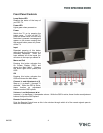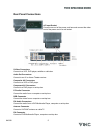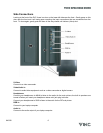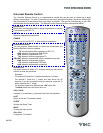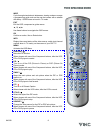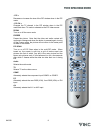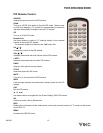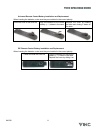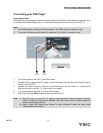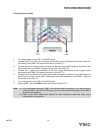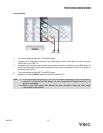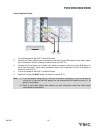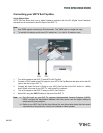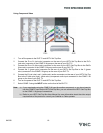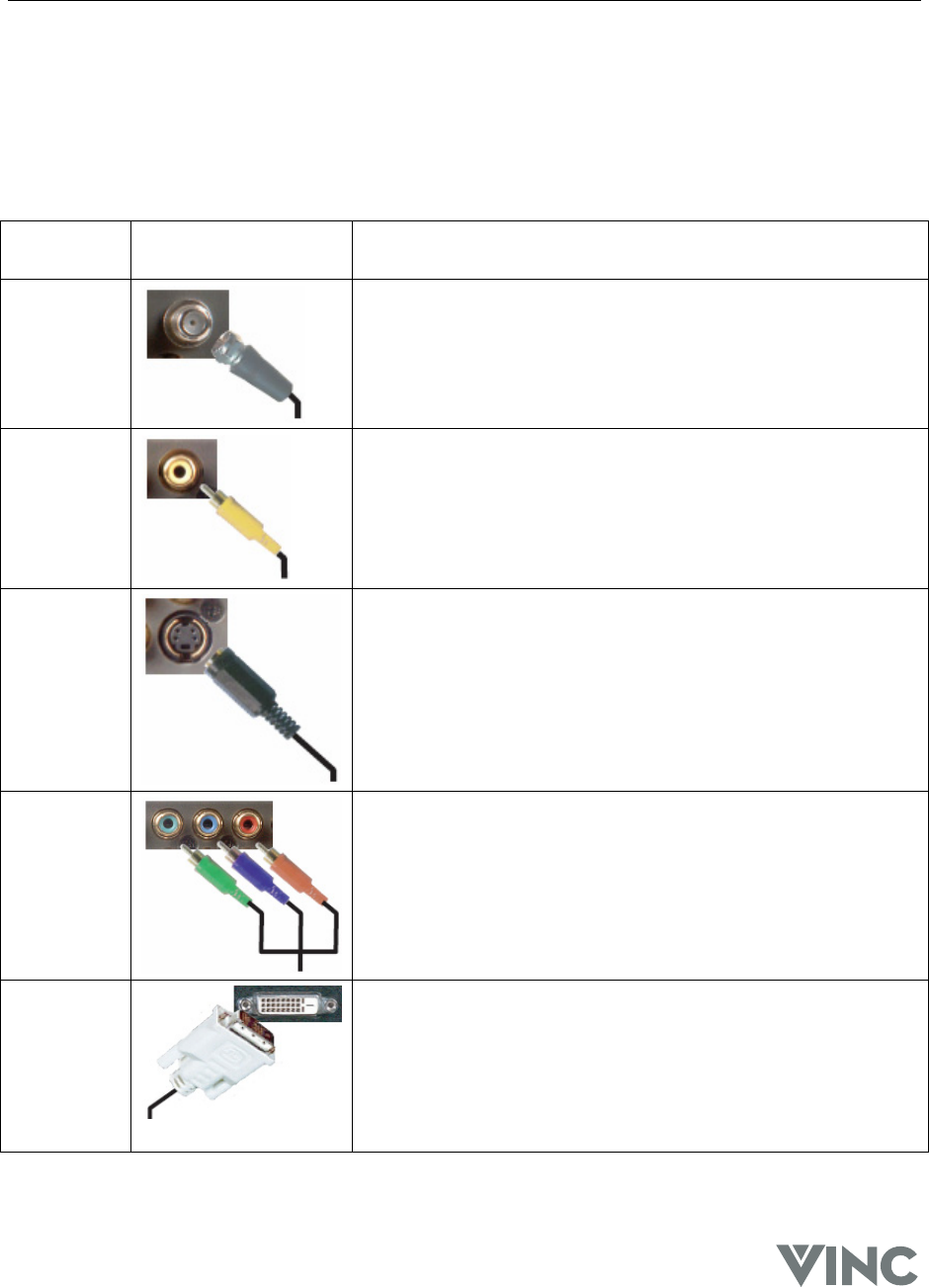
VIZIO RP56 User Guide
040330 12
2 Connecting Components
Power Connection
Connect the power cord to the AC Input at the rear of the DLP TV and then plug the power cord into an
AC wall socket.
Which Video Connection should I use?
The DLP TV has five different ways to connect your video equipment from a basic one to the most
advanced for digital displays.
Connection
Quality
Cable and Connector Description
OK
Coaxial RF. This is the only connection that has the audio as
well as the video in this one cable. If you have an antenna, this
is the only way you can connect it to the DLP TV. If you have a
VCR you could connect your antenna/cable to the VCR RF
Input and connect the VCR RF Output to this connector.
Basic
Composite. The complete video signal is carried through this
single pin connector. This is the most commonly used video
connector.
Good S-Video. The video signal is separated into two signals, one
containing the black-and-white information and the other
containing the color information. Separating the color in this
way avoids ‘cross color’ effects where closely spaced black
and white lines are erroneously displayed in color and also
enables text to be displayed more sharply.
Better Component. The video signal is separated into three signals,
one containing the black-and-white information and the other
two containing the color information. This enhancement over
S-Video takes advantage of the superior picture provided by
progressive scan DVD players and HDTV formats.
Best Digital Video (DVI). All of the picture information is received
digitally coded and as your DLP TV is a digital display it does
not have to convert the digital to analog. (The other inputs are
converted from analog to digital by the DLP TV.) Movies are
digitally encoded on DVD’s and so using a component such as
the Bravo Multimedia Player from V, Inc. with a DVI output
produces the ultimate picture performance.



